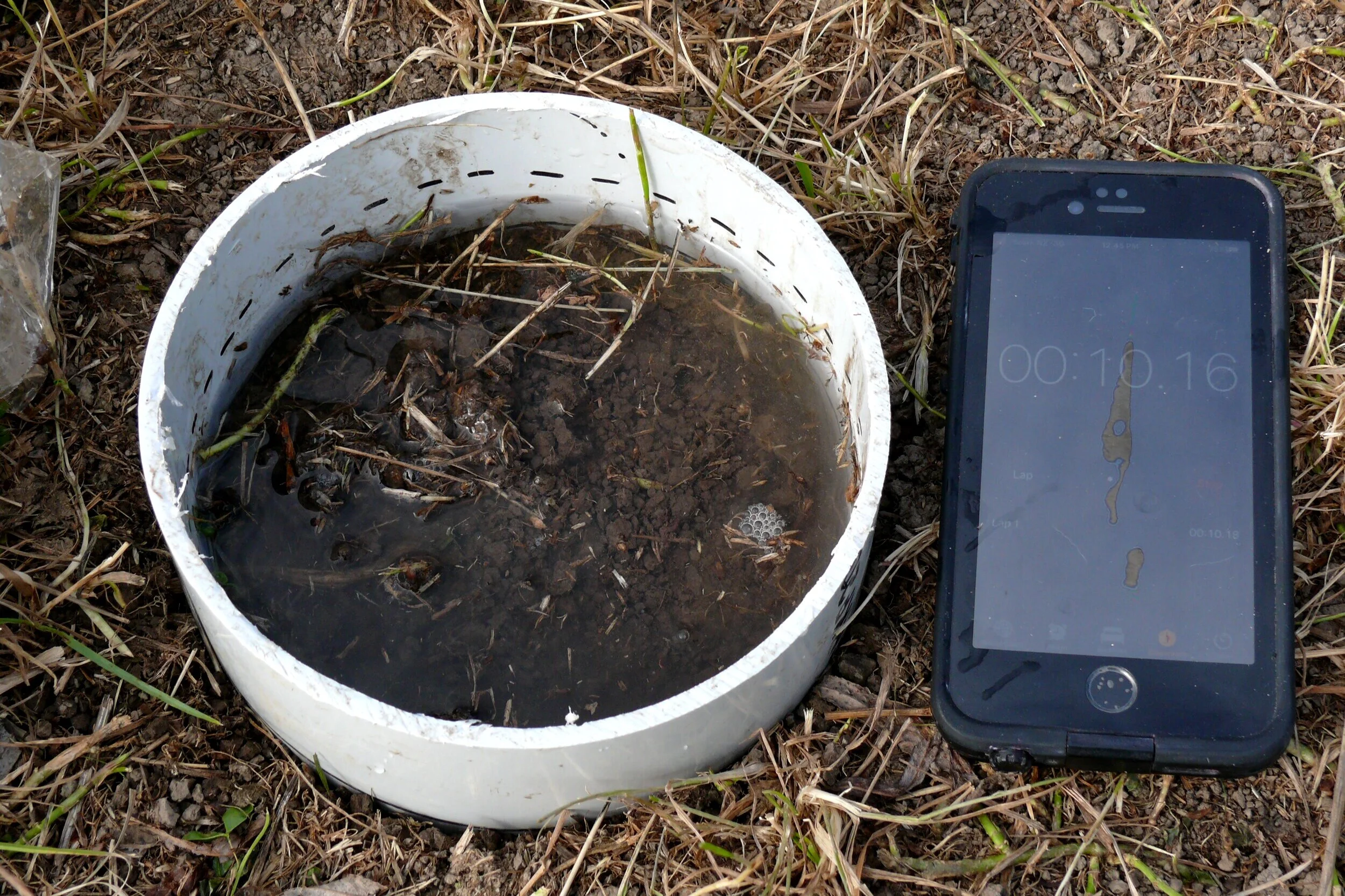The effect of irrigation on soil
What effect does irrigation have on the long-term water holding capacity of your soils? Manaaki Whenua Landcare Research recently led a Sustainable Farming Fund project that studied the relationship between irrigation and soil properties. Sarah from AgriBusiness Group was involved in the extension of the project, organising an event for journalists to learn about the recent scientific findings and their significance for farmers.
Analysing the quality and water holding capacity of soil through a visual soil assessment
For the project, scientists sampled 48 paired sites across Canterbury. That is, they studied paddocks that were partially irrigated and partially dryland under the same management and reflected a range of soil and stocking types. Half the sites were on stony soils, the rest on deep stone-free grounds.
So how is the water holding capacity affected by irrigation?
Water-Infiltration-Test: measuring the length of time for water to infiltrate the soil
In an irrigated system, the soil available water capacity (AWC) was significantly higher than in non-irrigated soils across both stony and stone-free soils. The volume of large pores that are responsible for drainage and aeration decreased under irrigation, while the volume of semi-available water (water held between stress point and wilting point) increased. The volume of very small pores that are unavailable for plant water extraction also increased under irrigation. Most changes in soil pore network components were seen for the 0–20 cm depth, while changes below this depth were less prominent. The changes in the irrigated soils pore network were attributed to the effects of compaction from grazing on the moist irrigated soils.
What does all this mean for you as a farmer?
Knowing your soils enables you to manage better stock movements, pasture selection, and irrigation which all help to improve nutrient management and the long-term environmental performance of your farm. Start to get a better understanding of the soils on your farm by going out, digging a hole and taking a close look at the structure, colour and porosity of your soil. You can do this type of basic visual soil assessment across the different management areas and soil types on your farm. As part of the project we created a basic guide to visual soil assessment. The soil datasheets from S-Maps (www.smap.landcareresearch.co.nz) help you identify the soil characteristics. You can use our introductory guide to help you navigate the site.
Digging out soil
Soil profile from within selected soil site
Analysing your soil properties helps you gain a better understanding of irrigation management, and how small changes to your irrigation schedule can ensure your soils are reacting best to water application. For most parts, farmers have already a good handle on their irrigation scheduling and water use efficiency. But there is always room for improvements to further enhance the performance.
Next, take a closer look at your stock management and pasture selection as additional influencing factors of soil quality. What effect does grazing have on your soil before and straight after irrigation; is there an increase in compaction, which reduces pasture performance? What influence do different stock types have throughout the seasons?
Speed dating: rural journalists had the opportunity to meet a range of scientists for in-depth insights into the latest soil research
The AgriBusiness Group delivered an exciting part of the project in March 2020. We organised an event for a range of different soil focused research projects to present their latest findings to a crowd of rural journalists. A challenge for research is to inform farmers about the information and results from various projects so they can adopt the techniques or new knowledge in their farm system. We trialled a speed dating style session after a brief overview of each project for journalists to gather further information to write stories and articles for various rural publications. The event resulted in 13 articles printed across various rural media channels giving farmers and the industry an insight into the work of scientists and their latest findings. Continuous learning and adopting best practice ensures good management practice on individual farms and our primary industry as a whole.
The final report of the soil-irrigation-project has not been released yet.



















